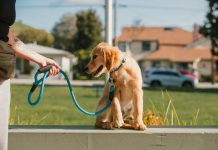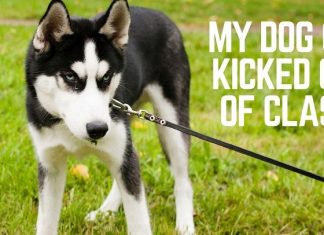Welcoming a new puppy into your home is an exciting adventure filled with playful moments and heartwarming experiences. However, amidst all the joy, it’s essential to establish some ground rules to ensure a harmonious living environment for both you and your furry friend. One of the foundational skills that can greatly enhance your puppy’s behavior is teaching them to stay in one place. Not only does this skill help manage your pup’s energy, but it also builds their confidence and strengthens the bond between you. In this article, we’ll explore simple yet effective methods to guide your puppy in mastering the art of staying put, making your home a more peaceful and organized space. Whether you’re a first-time pet parent or a seasoned dog lover, these gentle techniques will pave the way for a well-behaved companion.
Creating a Safe and Comfortable Space for Your Puppy
Ensuring that your puppy feels safe and secure in their designated area is essential for their comfort and training success. Begin by choosing a quiet, low-traffic area of your home where your puppy can relax without being disturbed. This spot should be equipped with a cozy bed or mat, which will become their personal sanctuary. Familiar scents like a piece of your clothing or a soft toy can be comforting and help your puppy settle in.
Consider these simple additions to make the space inviting and functional:
- Soft lighting to create a calming atmosphere.
- Baby gates to gently establish boundaries without feeling confined.
- Non-slip mats to prevent accidents as your puppy explores.
- Interactive toys to keep them entertained and mentally stimulated.
By tailoring this space to your puppy’s needs, you’ll foster a sense of security that encourages them to stay put, making training sessions more effective and enjoyable for both of you.

Using Positive Reinforcement Techniques to Encourage Staying
Positive reinforcement is a powerful tool in your puppy training arsenal. It involves rewarding your pup for desired behaviors, which in this case, is staying put. Start by selecting some high-value treats that your puppy adores. As you practice, remember to keep the training sessions short and engaging to maintain your puppy’s interest. Consistency is key, so ensure you reward your pup immediately when they successfully stay in place. This helps them associate the action with the reward.
- Use a Clicker or Marker Word: Whenever your puppy stays, use a clicker or a specific word like “yes” to mark the behavior before giving a treat.
- Gradually Increase Duration: Begin with a few seconds of staying and slowly increase the time as your puppy gets more comfortable.
- Incorporate Praise: Along with treats, use verbal praise to let your puppy know they’ve done well. A cheerful “good stay!” goes a long way.
- Practice in Different Environments: Once your puppy masters staying in a quiet room, try it in different settings to generalize the behavior.
Remember, patience and a positive attitude will not only make the learning process enjoyable but will also build a stronger bond between you and your furry friend.
Incorporating Fun and Engaging Training Sessions
Turning training into a delightful experience can make learning a breeze for your puppy. Start by using positive reinforcement, such as treats, praise, or a favorite toy, to reward your puppy each time they successfully stay in one place. This not only encourages good behavior but also strengthens your bond. Make sure the treats are small and healthy, so you can reward frequently without overfeeding.
- Short and Sweet: Keep training sessions brief, around 5-10 minutes, to match your puppy’s attention span. Frequent, short bursts of learning are more effective than lengthy sessions.
- Interactive Play: Incorporate games like “Stay and Seek,” where you ask your puppy to stay while you hide, then call them to find you. This adds an element of fun and adventure to the training.
- Change of Scenery: Practice the “stay” command in different environments. This helps your puppy understand that staying put is not just a living room rule but applies everywhere.
By transforming training into a joyful activity, your puppy will not only learn to stay in one place but will also look forward to these engaging sessions.

Understanding and Addressing Your Puppys Unique Needs
Understanding your puppy’s unique needs is the cornerstone of effective training, particularly when teaching them to stay in one place. Puppies, like humans, have distinct personalities and learning styles. Observing your puppy’s behavior and energy levels will guide you in tailoring your approach. Some puppies may require more physical activity to focus, while others may need a calm environment to prevent overstimulation. Knowing your puppy’s preferences can make the training process more enjoyable and productive for both of you.
To address these unique needs, consider the following strategies:
- Choose the Right Time: Pick a time when your puppy is naturally calm and less distracted, such as after a walk or meal.
- Create a Comfort Zone: Use a specific mat or bed to signal a designated stay area, reinforcing this with consistent commands.
- Incorporate Positive Reinforcement: Reward your puppy with treats or affection whenever they successfully stay in place, reinforcing the desired behavior.
- Adjust the Training Environment: Minimize distractions by training in a quiet room, gradually introducing more stimuli as your puppy becomes more adept.
By understanding and addressing your puppy’s individual needs, you pave the way for a smoother training journey and a more obedient companion.
















